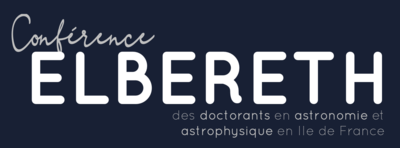Orateur
Description
The Epoch of Reionisation marks the transition between the end of the cosmic dark ages and the beginning of the universe as we know it today. During this time the radiation from the first stars and galaxies ionised the neutral hydrogen around them, fundamentally transforming the universe. The EoR is one of the last major phases of cosmic evolution that remains mostly unexplored as no direct observations have yet been made. However, this will change with the upcoming Square Kilometre Array (SKA), which will detect the 21cm signal from the EoR for the first time. This new data will provide a wealth of untested cosmological information ranging from the properties of the first luminous sources to the distribution of large-scale structure.
The 21cm observations from the EoR are expected to be highly complex, and so will require the use of statistics beyond the power spectrum to capture a full picture of the information. While the power spectrum is widely used to characterize the large-scale structure, it does not capture the non-Gaussian features introduced by reionisation. This presentation will focus on the Triangle Correlation Function (TCF) - a three-point-correlation function - which probes specifically the morphology and evolution of the “bubbles” of ionised hydrogen that surround the first ionising sources. The TCF is first applied to simple toy models of the EoR and then to more realistic simulations (such as 21cmFAST and LoReLi) to evaluate its potential for constraining cosmological and astrophysical parameters. This work will contribute to the SKA white book, which aims to specify the expected scientific outcomes of the SKA and the statistical tools that will be used to analyse future EoR observations.
| Astrophysics Field | Cosmology, Epoch of Reionisation |
|---|

